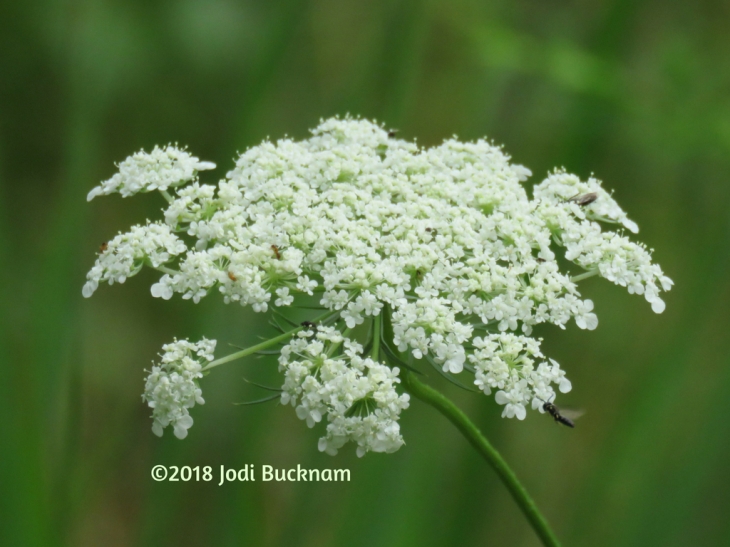I managed to squeeze in a half-hour of butterflying at Woodend this weekend, in between rainstorms. Although the weather wasn’t perfect, I did manage to scare up a few butterflies.
Because my visit was so short, I only surveyed the lower field. The first butterflies I encountered were skippers on blue ageratum. There were two Peck’s Skippers, and one Least Skipper (new for this summer for me, as well as for our project this year).

I rounded the lower corner of the field to find sky-high Joe Pye weed in bloom. Normally this is a magnet for butterflies, but none were present right now. If you make it out to Woodend this week, these ought to attract swallowtails as well as skippers.


Most of the monarda is almost gone by, but I did find a Silver-spotted Skipper nectaring on the long lavender tubular flowers.

I looked for Monarch and Black Swallowtail caterpillars on Common Milkweed and Queen Anne’s Lace, respectively, but no luck.

Just as the first few raindrops began to fall, I spotted my last butterfly for the day: a very tattered Pearl Crescent. I think the heavy rain on Saturday was pretty rough on this poor butterfly!

Once I’d taken a few photos, it started raining in earnest, and I ran for my car, trying to shield my camera from the rain as I went.
This has really been a rough season so far for butterfly watching—first a cold wet spring, then unusual heat that made it tough for any of us to be outside for long, plus a dry spell that lasted nearly three weeks. Now we’re supposed to have rain daily for almost a whole week. But please don’t despair! Late summer and early fall are actually one of the best times for butterflying in our area. This week’s rain should help the plants explode, both with nectar-giving flowers for our adult butterflies and with plenty of foliage to feed their caterpillars.
I’ve been reading on local butterfly listservs that other folks are seeing very low total numbers of butterflies too, just like we seem to be. Getting out there and trying to document what we can is still really important. In the long term our surveys can help identify trends. Will this summer be the new normal, or will we go back to seeing higher totals again next summer? I look forward to finding out with you all.